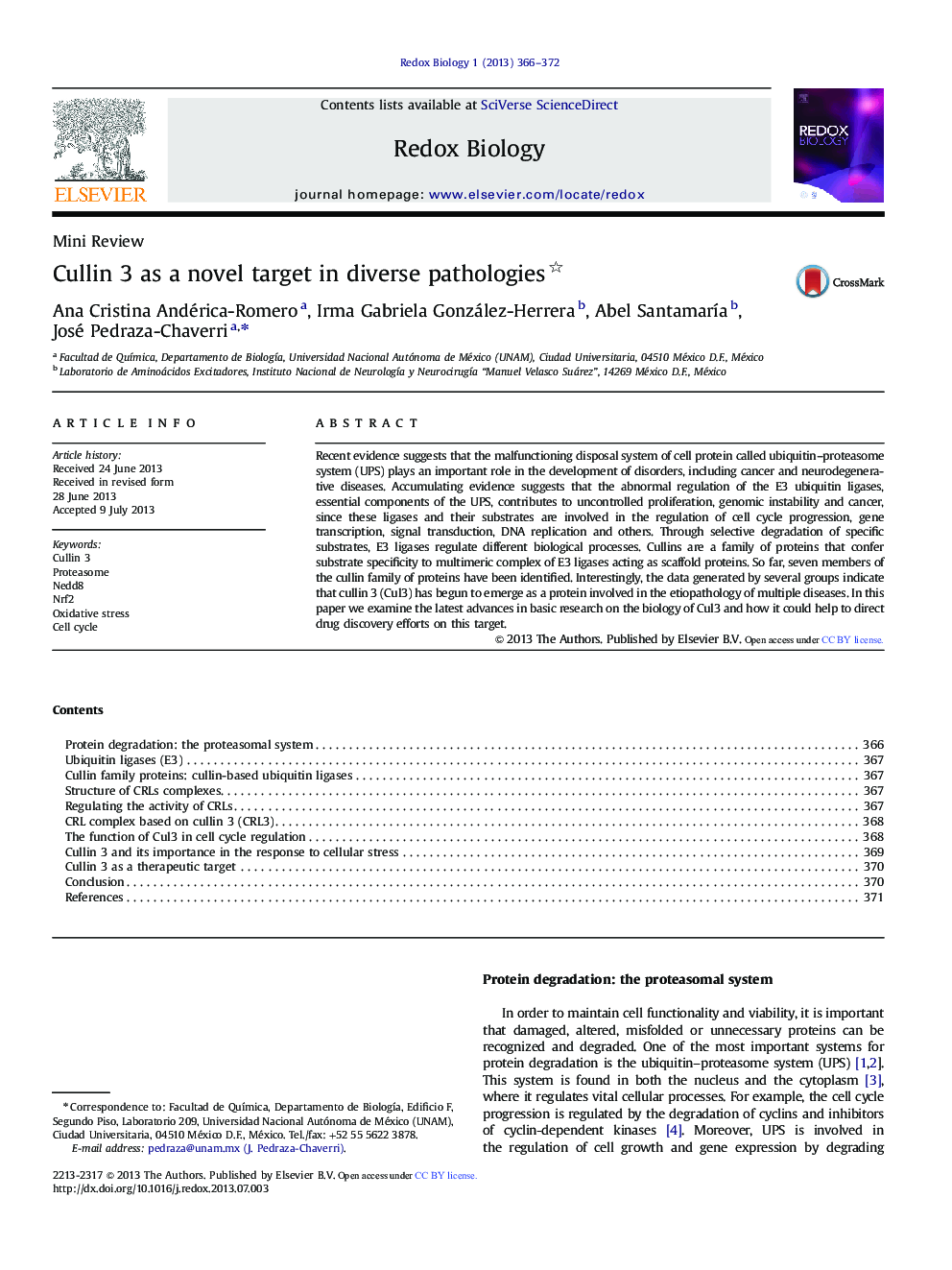| Article ID | Journal | Published Year | Pages | File Type |
|---|---|---|---|---|
| 1923230 | Redox Biology | 2013 | 7 Pages |
•The most important system for protein degradation is the ubiquitin–proteasome system.•The specific substrate for ubiquitination is highly specific and this activity can be provided by the E3 ubiquitin ligases.•The E3 ubiquitin ligases based on cullins are the type of ubiquitin ligases more studied.•The cullin 3 complex has emerged as a target due to its interaction with a wide range of BTB-proteins.•Cullin 3 could be a molecule with a high therapeutic potential.
Recent evidence suggests that the malfunctioning disposal system of cell protein called ubiquitin–proteasome system (UPS) plays an important role in the development of disorders, including cancer and neurodegenerative diseases. Accumulating evidence suggests that the abnormal regulation of the E3 ubiquitin ligases, essential components of the UPS, contributes to uncontrolled proliferation, genomic instability and cancer, since these ligases and their substrates are involved in the regulation of cell cycle progression, gene transcription, signal transduction, DNA replication and others. Through selective degradation of specific substrates, E3 ligases regulate different biological processes. Cullins are a family of proteins that confer substrate specificity to multimeric complex of E3 ligases acting as scaffold proteins. So far, seven members of the cullin family of proteins have been identified. Interestingly, the data generated by several groups indicate that cullin 3 (Cul3) has begun to emerge as a protein involved in the etiopathology of multiple diseases. In this paper we examine the latest advances in basic research on the biology of Cul3 and how it could help to direct drug discovery efforts on this target.
Graphical abstractFigure optionsDownload full-size imageDownload as PowerPoint slide
